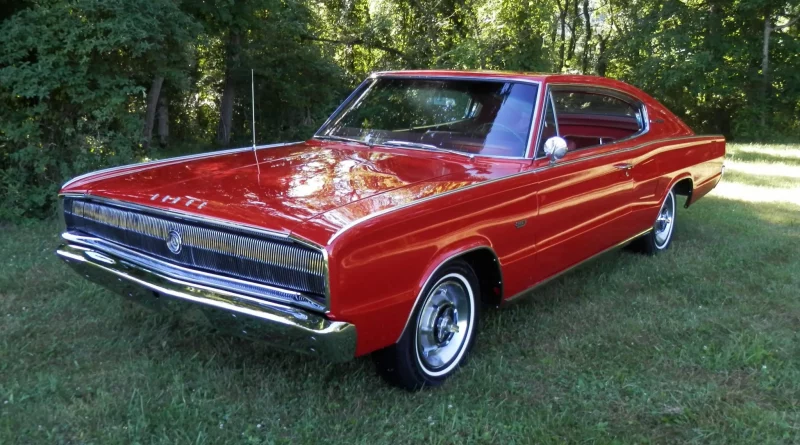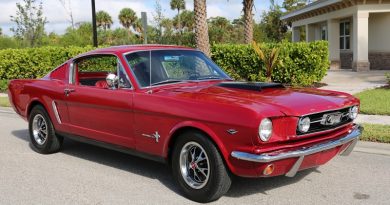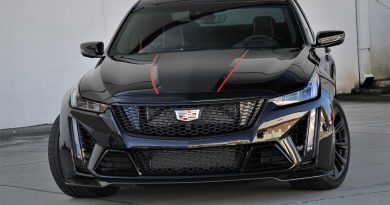1966 Dodge Charger 383
The Dodge Charger was Chrysler Corporation’s more luxurious response to the Mustang, billed as a mid-size fastback coupe similar in size and shape to the AMC Marlin. It was based on the Coronet but shared none of its visuals and spawned a number of super quick versions that tortured just about any early Mustangs.

The year was 1966 when Dodge finally joined the fastback muscle car party with the Charger. It was based on the B-body platform and was previewed in an ad that ran during that year’s Rose Bowl which talked about the new “Leader of the Dodge Rebellion.”

This 1966 Dodge Charger is powered by a replacement 383ci V8 mated to a three-speed TorqueFlite automatic transmission, and the car is finished in red over red vinyl.

Steel 14″ wheels wear full covers and are wrapped in Kumho whitewall tires. A spare wheel and tire along with a jack are housed in the floor of the trunk.

The interior features seating surfaces upholstered in red vinyl with a matching dashboard and door panels. The carpets and sill plates are said to have been replaced during the previous refurbishment, and additional features include front and rear bucket seats, front and rear consoles, metallic trim, carpeted floor mats, entryway lighting, and a push-button AM radio. The three-spoke steering wheel frames a 150-mph speedometer, a 6k-rpm tachometer, and gauges for fuel level and oil pressure.
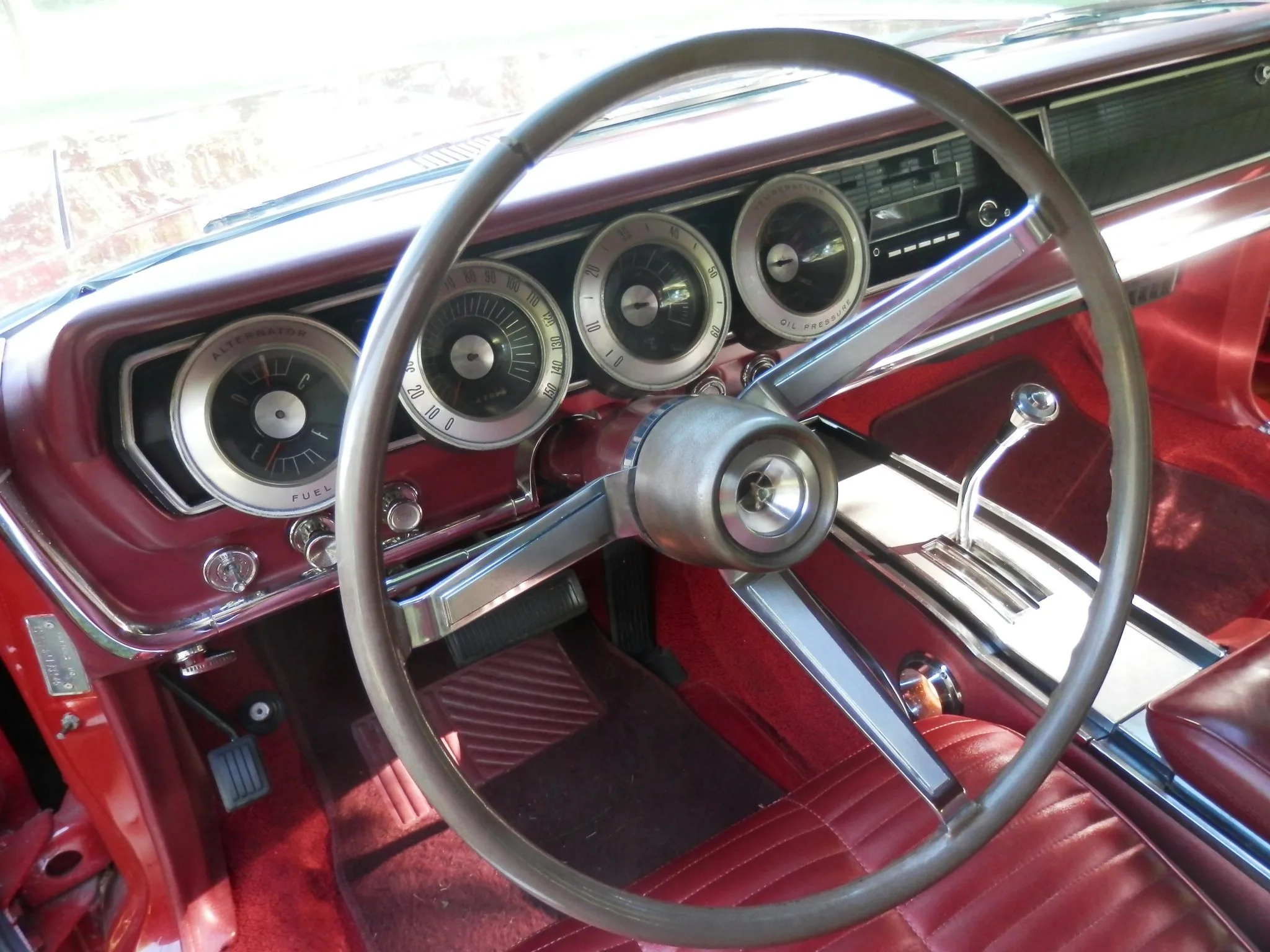
The replacement 383ci V8 sourced from Drake Engines of Rochester, New York was fitted under prior ownership and features a blue-finished block and valve covers.
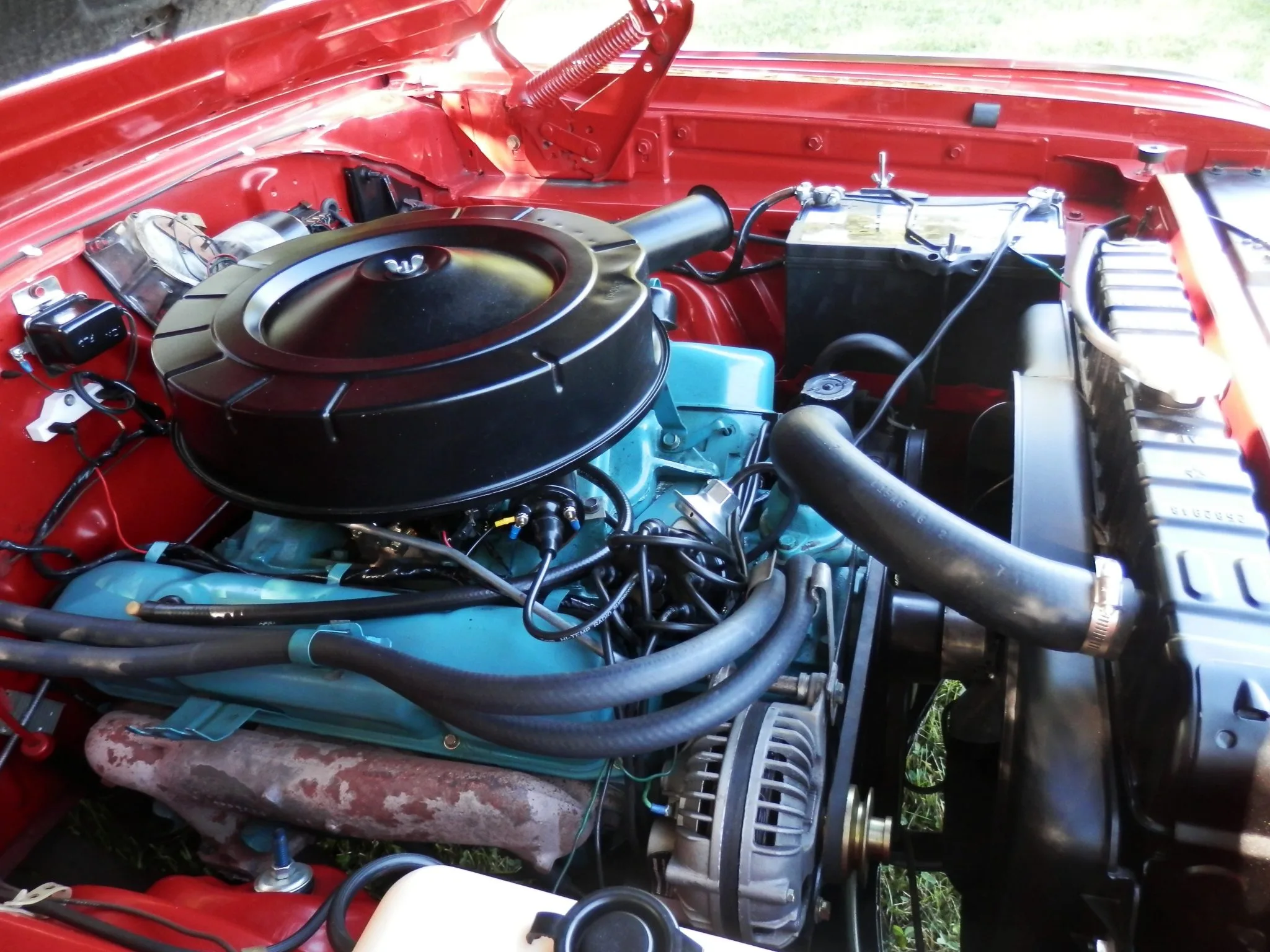
The Dodge Charger, with its huge wraparound rear window and alluring fastback design, became hard to miss on the road, especially during the 1960s. How can anyone forget the ‘electric shaver’ front grille covering the entire front fascia and held in place by chromed trim pieces. It also hides the four headlights that rotate into view on demand. Just below the grille, there’s a wide chromed bumper with two integrated vertical elements. The same is found at the rear as well. One of the peculiar things about this car is that whenever you open the hood, it opens with the central part of the front trim.

The 1966 Charger has a boxy outline as a rectangle was its go-to geometric shape. But it never looks boring, thanks to the two character lines that run down the middle of the car, giving it a much-chiseled look. The lines run past the front wheels, across the door, and then move farther apart to make some space for the two sets of horizontal elements positioned at the Charger’s rear. Chrome found its position at multiple places such as the top of the fenders and even the doors. It also gets Rallye-style hubcaps with blacked-out sections and a chromed lip.

